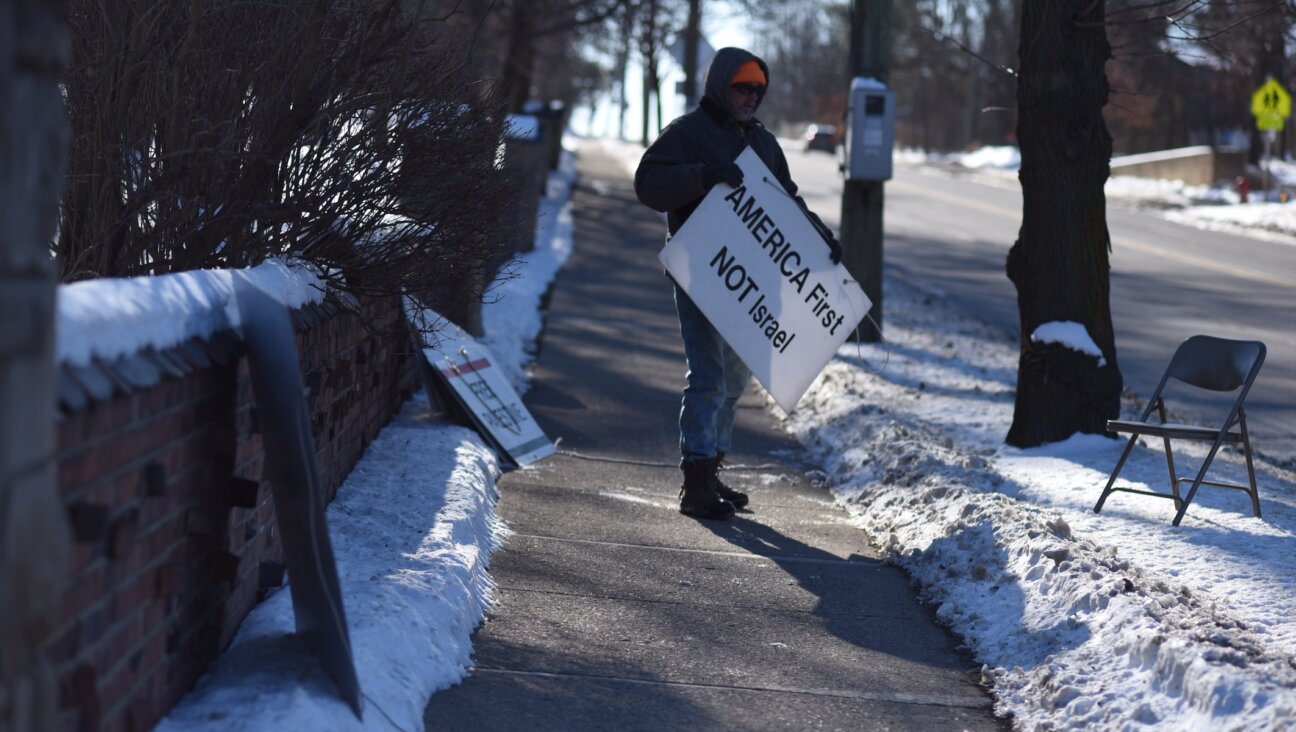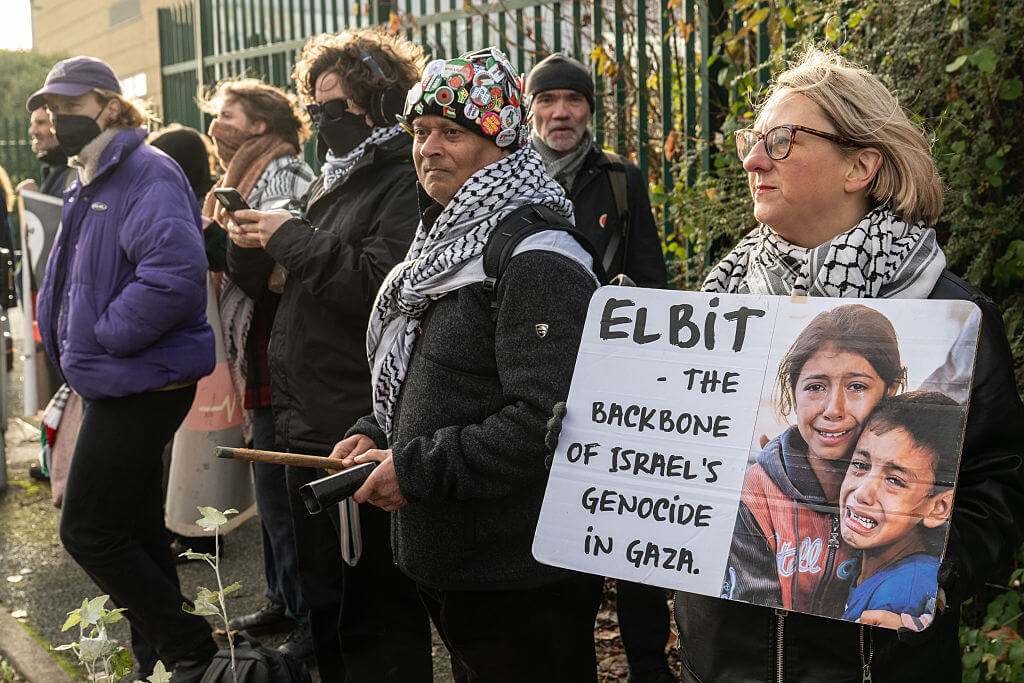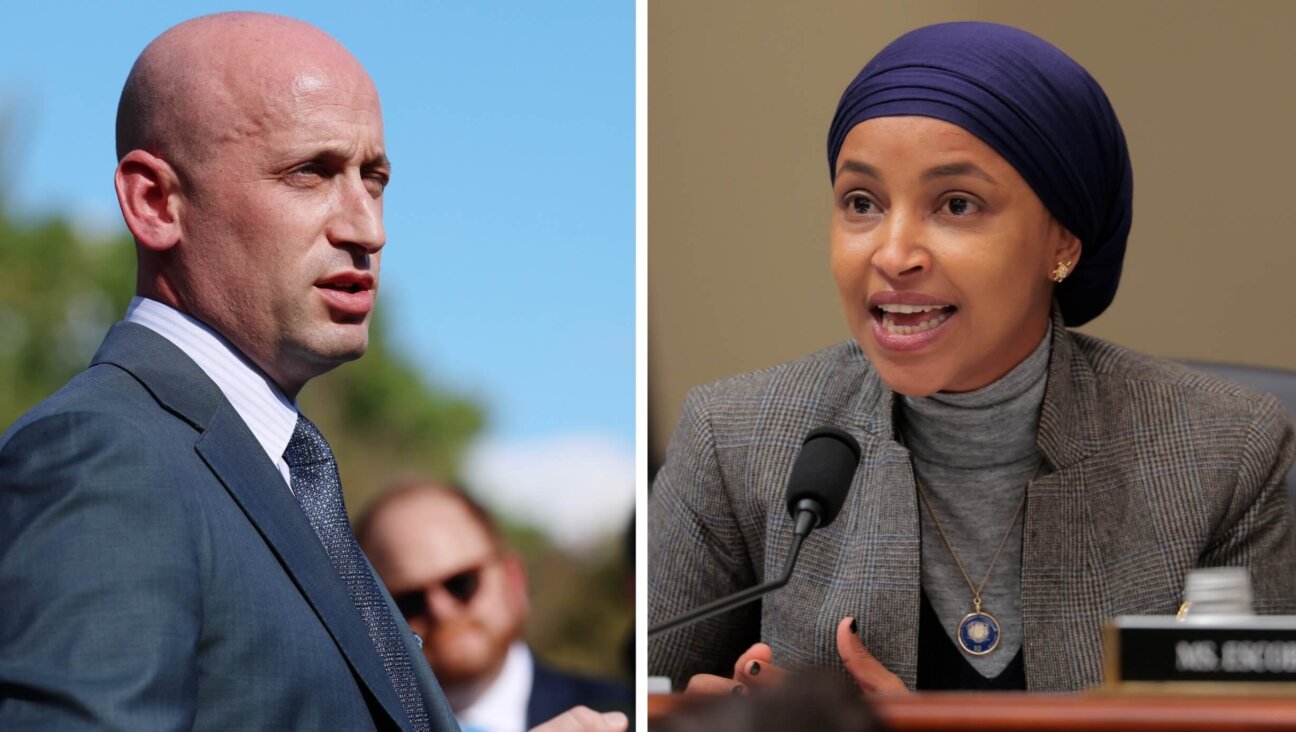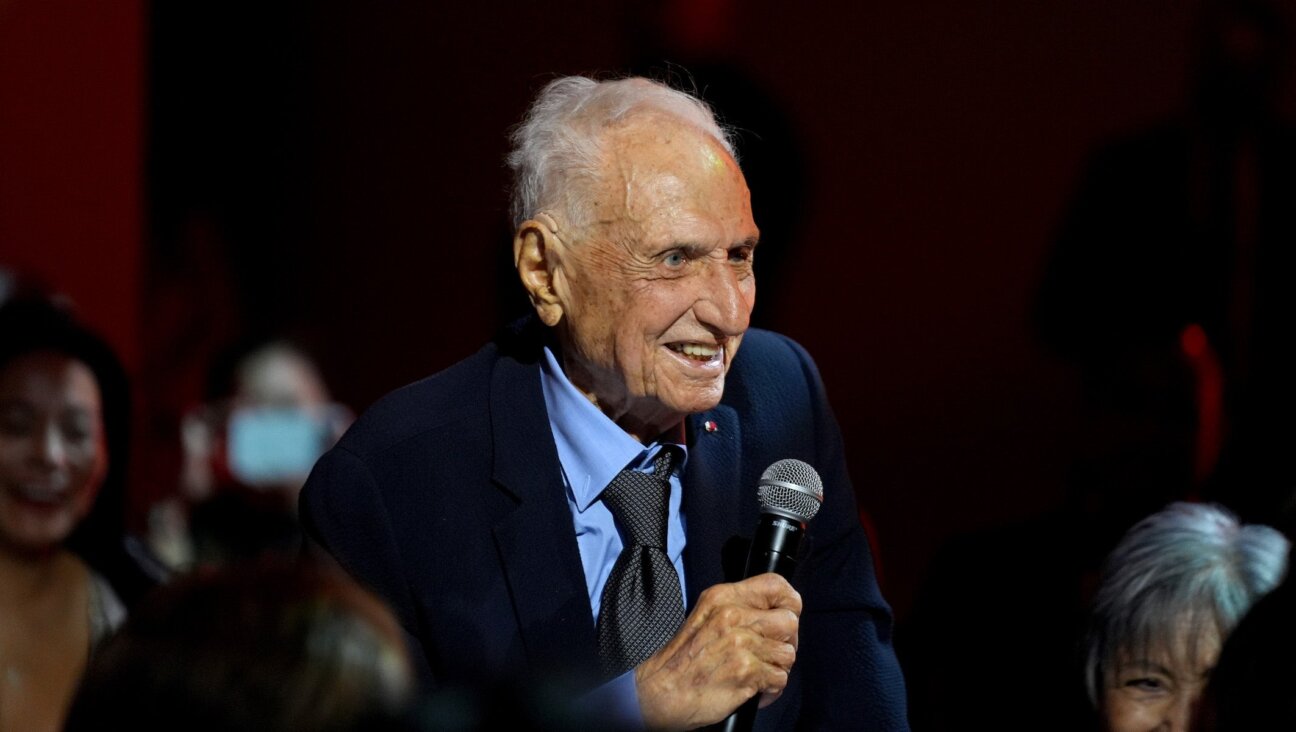Controversial Brooklyn Eruv for Modern Orthodox Vandalized Amid Dispute With Chabad
The ritual barrier was not approved by rabbinic authorities

Image by Nikki Casey
A controversial new eruv designed to serve Modern Orthodox Jews in the traditionally Hasidic Brooklyn neighborhood of Crown Heights was allegedly vandalized — days after rabbis from the Chabad-Lubavitcher group said the ritual barrier was not approved by rabbinic authorities.
The wire that is erected around Orthodox areas allowing for otherwise-prohibited activities on the Sabbath was cut and torn down twice in the past week, members of the growing Modern Orthodox community in the neighborhood said.
“It was broken in 20 places,” said Naftali Hanau, a Crown Heights resident who advocated for the new eruv.“This was clearly vandalized.”
The first episode of alleged vandalization took place sometime during the week of July 4, said Hanau, who is also on the board of Congregation Kol Israel, a mostly Modern Orthodox synagogue in the neighborhood. Hanau and other eruv advocates repaired the ritual wire before the Sabbath, but vandals, he said, tore down the eruv again July 11. The eruv is only 3 weeks old.
It is not clear who might have damaged the eruv. Hanau said police were notified but there was no word on any suspects.

Boundaries: The Greater Crown Heights eruv, in gray, is the area contained by the controversial eruv. Image by Google Maps
Crown Heights has gone for decades without an eruv. Neighborhood leaders point to comments from the late Chabad leader rabbi Menachem Mendel Schneerson as evidence that he forbade a neighborhood eruv. His edicts are generally maintained by Chabad leaders.
“It’s self-understood that the Rebbe’s decision is final, and it is forbidden for anyone to help or support… the building of an eruv in our neighborhood,” read an earlier letter from Rabbi Avrohom Osdoba, a senior member of the Crown Heights beit din, or rabbinical court.
Osdoba and another beit din member, Rabbi Shlomo Yehuda Halevy Segal, said the eruv was not kosher. He called the erection of the eruv “the devastation of the Shabbat in our honorable neighborhood.”
Despite the rabbis’ condemnation of the eruv, there is no evidence that Chabad members are responsible for the vandalism. A Chabad spokesman declined to comment.
The neighborhood is best known as the spiritual center of the Chabad Hasidic sect. The global headquarters of the movement, at 770 Eastern Parkway, is a pilgrimage site for thousands of Jews. The former home and synagogue of the group’s late leader is treated with great reverence.
The push for the new eruv is powered by a growing Modern Orthodox community, some of the members priced out of other areas of Brooklyn. But members of the Chabad community who have called this Brooklyn neighborhood home for years — through the Crown Heights riots of 1991, and well before the rapid gentrification of the borough — feel that their Hasidic culture is threatened by the recent influx of more moderate Jews.
Modern Orthodoxy is a liberal stream within Orthodoxy that notably allows for an expanded communal role of women.
The Greater Crown Heights Eruv, as it is known, allows observant Jews to move more freely during the Sabbath. It encircles Crown Heights and portions of some surrounding neighborhoods, such as Prospect Heights, Lefferts Gardens and Brownsville. The portion of the new eruv that was vandalized runs alongside the east perimeter of Prospect Park, near the Brooklyn Museum.
Disputes over Jewish ritual boundaries like this are nothing new.
Fighting over eruvs has a long history, and Jews (and non-Jews) have sparred over the marking of religious space many times in recent years. Eruv supporters generally carry the day. There are hundreds of eruvs in cities around the world — every town in Israel has one — but some of them are very controversial.
Here are five notable territorial disputes in recent memory.
1. In 2000, the Hasidic enclave of Boro Park was divided over whether or not the neighborhood could have an eruv. According to a New York Times article at the time, it was mostly Hasidic women who pushed for a neighborhood expansion of a small eruv that had been erected for a disabled boy.
“The people seeing the biggest benefit are the young mothers who used to be locked up in the house,” said Rabbi Efraim Blumenberg, president of the Eruv Society of Boro Park. “Now you see them going out. The whole world is opened up for them. The benefit is so strong, it overshadows everything.”
Some rabbis, though, worried that the eruv would “cheapen” the Sabbath. “It makes it look like a weekday, and that is not something we want to see,” said Rabbi Shaul Bick. But the eruv stayed, making it the first large-scale eruv in a mostly Hasidic New York City neighborhood.
2. In Northwest London, a bitter eruv dispute was drawn out for more than a decade, Haaretz reported.
Secular Jews, and non-Jews, worried that the neighborhood would be flooded with Orthodox, changing its character.“It is a physical claim of territory which the majority of people find inappropriate,” one critic said.
But supporters of the eruv said it would benefit the thousands of Orthodox Jews who called the place home. “The eruv would definitely improve the quality of my life dramatically,” one Jewish mother told the Guardian. “I don’t see why it can’t happen. It’s a technical boundary which doesn’t impinge on anybody. What’s the difference between it and a parish boundary?”
In 2003, the eruv was finally approved and erected.
3. In the Hamptons, members of the Hampton Synagogue on Sunset Avenue began pushing for an eruv in 2008, hoping to enclose Westhampton Beach and neighboring Quogue, both villages within the town of Southampton. The dispute here attracted a huge amount of attention, even earning a mention by Jon Stewart on Comedy Central’s “The Daily Show.”
The Hamptons are home to large secular and Reform Jewish population that objected to what they feared would be an influx of Orthodox Jews. Arnold Sheiffer, who belonged to a group called Jewish People Opposed to the Eruv, told The New York Times that an eruv would “create another ghetto” in the Hamptons. “As a Reform Jew, I find it extremely offensive to create a distinction that this is a Jewish area,” he said.
The dispute resulted in federal lawsuits — three of them. The eruv supporters have come out on top.
4. In Venice Beach, California, an Orthodox eruv proposal came under fire from local environmentalists concerned that the 4 miles of fishing line used in the eruv would disturb birds’ nesting areas. Mark Massara, a Sierra Club official, objected at one hearing: “This is really nuts. To the extent that we’re allowing public property to be used for religious purposes, it is very troublesome.”
After much back-and-forth, the Orthodox congregation behind the eruv made a concession. They agreed to put metallic streamers on the fishing line near the nesting area to warn off birds, the Jewish Journal reported in 2006, and the eruv was given the go-ahead.
5. An eruv proposal in 2013 ignited a tense battle among residents of the Miami Beach neighborhood of Pinetree Park. In 2014 an atheist organization objected to the – eruv. The Freedom From Religion Foundation demanded the eruv be dismantled.
“The religious significance of eruv[s] is unambiguous and indisputable,” the group wrote. “They are objects which are significant only to some Jews as a means to obey religious laws that have no bearing on nonadherents. They have no meaning except as a visual, public communication of a purely religious concept for religious believers of a single faith. The City cannot allow such permanent religious displays to be erected on public land.”
Miami Beach — which has a large Orthodox population — has stood behind the eruv. The whole debate even inspired a movie.
Email Sam Kestenbaum at [email protected] or follow him on Twitter, @skestenbaum

















